#haofeng xu
Text



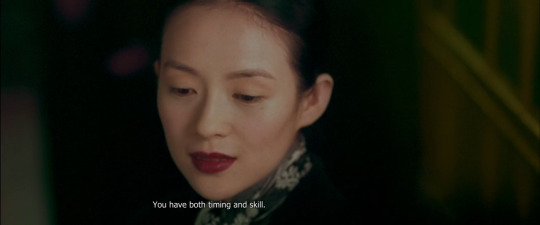

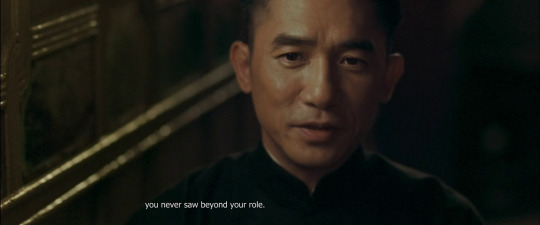




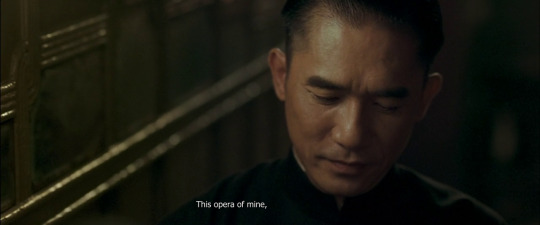
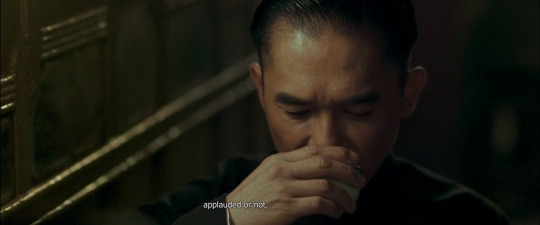
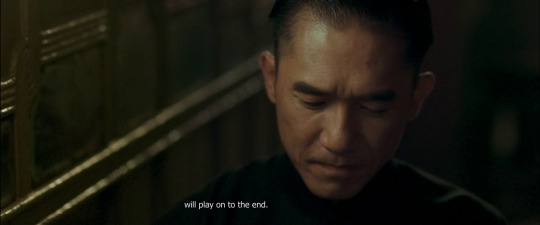
一代宗师, 2013
#action#biography#drama#一代宗师#the grandmaster#ip man#kar-wai wong#jingzhi zou#haofeng xu#tony leung chiu-wai#ziyi zhang#performance
4 notes
·
View notes
Text
Men qian bao di (2023)
100 Yards / 门前宝地 Jahr: 2023 (August)
Genre: Action / Drama
Regie: Haofeng Xu, Junfeng Xu
Hauptrollen: Jacky Heung, Andy On, Xu Changchu, Bea Hayden Kuo, Kevin Lee, Yuan Li, Hu Maotao …
Filmbeschreibung: Tianjin, Nordchina, 1920er Jahre. Der Sohn eines Kampfkunstmeisters und sein talentiertester Lehrling kämpfen um die Übernahme einer bekannten Kampfkunstakademie. Doch anstatt sich an die…
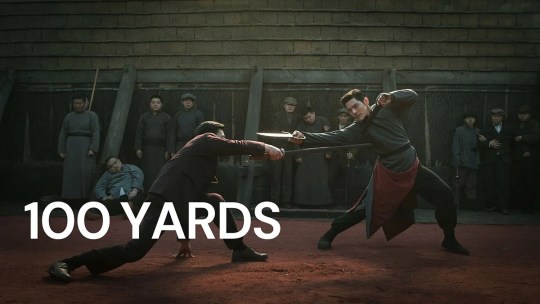
View On WordPress
0 notes
Text
"100 Yards"
A dull and sorely boring martial arts movie with a lackluster story and disappointing lack of adventure.
I lean towards the colder side of lukewarm on “100 Yards,” a classic Kung Fu movie co-directed by brothers Haofeng and Junfeng Xu. The martial arts choreography is proficient but uninspired, and no amount of stylish filmmaking can overcome the lackluster story and disappointing lack of adventure.
Set in the 1920s Tianjin, the film tells the story of two bitter rivals and their duel to control a…

View On WordPress
0 notes
Text
Xu Haofeng's first novel was published the following year, in 2007 : "A Taoist Monk Comes Down from His Mountain" ( 《道士下山》 ) . We then spoke of the “hard current” of the wuxia novel (硬派武侠小说) . The story is, however, full of humor: at the beginning of the Republic, a little Taoist monk who can no longer bear solitude comes down secretly from his mountain and returns to the world. Result: he finds himself in a country in chaos, and

“A Taoist monk comes down from his mountain” ( 《道士下山》)
has a series of strange, fantastic encounters that transform his existence.
It is a novel with multiple characters constructed a bit like “At the Water's Edge” ( 《水浒传》) which is the implicit reference . The book was a bestseller.
In October 2008 , the publication of his third novel, “The National School of Guoshu ” ( 《国术馆》 ) [6] , met with the same success: it was placed in the list of the ten best sellers of the year and was even praised by Mo Yan (莫言) . Xu Haofeng asserts his style there.
Unlike Jin Yong or Gu Long, who describe the tricks found by their martial arts masters to win their fights, Xu Haofeng focuses on depicting the way in which his characters comply with very strict training. On the other hand, what is interesting about him is that he often diverges from his narrative line to insert reflections on subjects like calligraphy, painting, food, or antiques, which give depth and diversity to the story. his stories. But above all the story is treated in the style of fantastic realism (魔幻写实主义) that Xu Haofeng knows well: he wrote an essay on Borgès, “The Eye of Borgès” ( 《博尔赫斯的眼睛》).
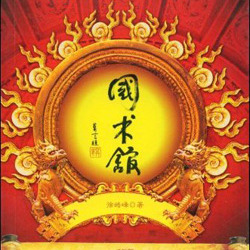
“The National Kung Fu School” ( 《国术馆》)
The main character is a young man who believes he was director of the school of the title in Nanking in the 1920s. He is described with great humor, continuing to apply rules from another age, like a a sort of Don Quixote embarked on an absurd and tragic journey. He preserves his values and his personal esteem, but is condemned to failure, symbol of a world itself condemned by modernity.
At the same time as his style asserts itself, his thinking becomes more complex. His short story “Survive” ( 《劫活》 ) takes place around a go board in the 1920s. The story is that of battles between Chinese and Japanese players, kung-fu masters, spies and Buddhist monks.
The complexity of the parallelism with the game of Go is illustrated by the title, which is a Go term, in fact. The whole game is based on a principle of life and death: circled pieces are 'dead', captured and eliminated from the game; one must capture (劫jié ) to survive (活huó ) , a vital principle of the Warring States period which saw the development of the game.
Xu Haofeng's latest novel returns to the theme of the game of go, but coupling it with a Buddhist theme. Published in November 2010 , it is titled “The Mandala of Enlightenment” ( 《大日坛城》 ) . The title refers to the s ū tra Maha Vairocana ( 《大日经》) , one of the two essential sutras of the Tibetan and Japanese tantric schools ; arriving in China at the very beginning of the 8th century , it was translated in 724-25, and the translation then reached Japan. The Sanskrit original having disappeared, it is this Chinese version which is the oldest.

“The mandala of enlightenment”
( 《大日坛城》)

the mandala of the Maha Vairocana sutra
According to this tradition, when the Buddha had achieved enlightenment, he remained in the form of Vairocana for seven days during which he transmitted his teaching to Vajrapani and other bodhisattvas , an obviously symbolic transmission. However, it is the game of go that is at the center of the story, because the main character was a master in China in the 1940s, at the time of the Sino-Japanese War. Go competitions, likened to martial arts competitions, reflect the struggle between the two countries, but inverted: while the Japanese run from victory to victory, the go master remains invincible...
The three elements, esoteric Buddhism, martial arts and the game of go, are linked in the novel by
convergent symbols; Xu Haofeng seems to make them the three components of a “way” ( “道”) of salvation.
-https://www-chinese--shortstories-com.translate.goog/Auteurs_de_a_z_XuHaofeng.htm?_x_tr_sch=http&_x_tr_sl=fr&_x_tr_tl=en&_x_tr_hl=en&_x_tr_pto=sc
#xu haofeng#lost in translation#best overview of his writing i've come acorss so far#but still not what I was trying to find again
11 notes
·
View notes
Text
100 YARDS Trailer | TIFF 2023 - YouTube
youtube
100 YARDS
Two bitter rivals (Jacky Heung and Andy On) duel for stewardship of a wushu academy, in this cool and calculated martial arts caper from Xu Haofeng (The Sword Identity, The Final Master)
0 notes
Text
Safer skies with self-flying helicopters
In late 2019, after years of studying aviation and aerospace engineering, Hector (Haofeng) Xu decided to learn to fly helicopters. At the time, he was pursuing his PhD in MIT’s Department of Aeronautics and Astronautics, so he was familiar with the risks associated with flying small aircraft. But something about being in the cockpit gave Xu a greater appreciation of those risks. After a couple of…

View On WordPress
0 notes
Text
Safer skies with self-flying helicopters
New Post has been published on https://thedigitalinsider.com/safer-skies-with-self-flying-helicopters/
Safer skies with self-flying helicopters
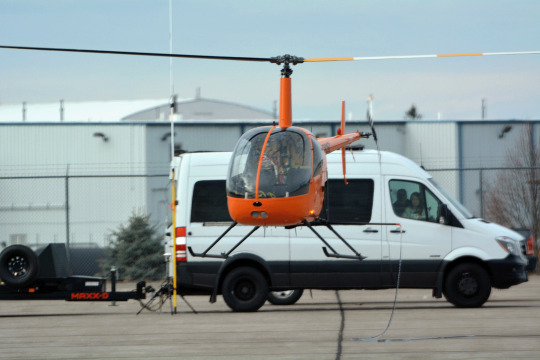

In late 2019, after years of studying aviation and aerospace engineering, Hector (Haofeng) Xu decided to learn to fly helicopters. At the time, he was pursuing his PhD in MIT’s Department of Aeronautics and Astronautics, so he was familiar with the risks associated with flying small aircraft. But something about being in the cockpit gave Xu a greater appreciation of those risks. After a couple of nerve-wracking experiences, he was inspired to make helicopter flight safer.
In 2021, he founded the autonomous helicopter company Rotor Technologies, Inc.
It turns out Xu’s near-misses weren’t all that unique. Although large, commercial passenger planes are extremely safe, people die every year in small, private aircraft in the U.S. Many of those fatalities occur during helicopter flights for activities like crop dusting, fighting fires, and medical evacuations.
Rotor is retrofitting existing helicopters with a suite of sensors and software to remove the pilot from some of the most dangerous flights and expand use cases for aviation more broadly.
“People don’t realize pilots are risking their lives every day in the U.S.,” Xu explains. “Pilots fly into wires, get disoriented in inclement weather, or otherwise lose control, and almost all of these accidents can be prevented with automation. We’re starting by targeting the most dangerous missions.”
Rotor’s autonomous machines are able to fly faster and longer and carry heavier payloads than battery powered drones, and by working with a reliable helicopter model that has been around for decades, the company has been able to commercialize quickly. Rotor’s autonomous aircraft are already taking to the skies around its Nashua, New Hampshire, headquarters for demo flights, and customers will be able to purchase them later this year.
“A lot of other companies are trying to build new vehicles with lots of new technologies around things like materials and power trains,” says Ben Frank ’14, Rotor’s chief commercial officer. “They’re trying to do everything. We’re really focused on autonomy. That’s what we specialize in and what we think will bring the biggest step-change to make vertical flight much safer and more accessible.”
Building a team at MIT
As an undergraduate at Cambridge University, Xu participated in the Cambridge-MIT Exchange Program (CME). His year at MIT apparently went well — after graduating Cambridge, he spent the next eight years at the Institute, first as a PhD student, then a postdoc, and finally as a research affiliate in MIT’s Department of Aeronautics and Astronautics (AeroAstro), a position he still holds today. During the CME program and his postdoc, Xu was advised by Professor Steven Barrett, who is now the head of AeroAstro. Xu says Barrett has played an important role in guiding him throughout his career.
“Rotor’s technology didn’t spin out of MIT’s labs, but MIT really shaped my vision for technology and the future of aviation,” Xu says.
Xu’s first hire was Rotor Chief Technology Officer Yiou He SM ’14, PhD ’20, whom Xu worked with during his PhD. The decision was a sign of things to come: The number of MIT affiliates at the 50-person company is now in the double digits.
“The core tech team early on was a bunch of MIT PhDs, and they’re some of the best engineers I’ve ever worked with,” Xu says. “They’re just really smart and during grad school they had built some really fantastic things at MIT. That’s probably the most critical factor to our success.”
To help get Rotor off the ground, Xu worked with the MIT Venture Mentoring Service (VMS), MIT’s Industrial Liaison Program (ILP), and the National Science Foundation’s New England Innovation Corps (I-Corps) program on campus.
A key early decision was to work with a well-known aircraft from the Robinson Helicopter Company rather than building an aircraft from scratch. Robinson already requires its helicopters to be overhauled after about 2,000 hours of flight time, and that’s when Rotor jumps in.
The core of Rotor’s solution is what’s known as a “fly by wire” system — a set of computers and motors that interact with the helicopter’s flight control features. Rotor also equips the helicopters with a suite of advanced communication tools and sensors, many of which were adapted from the autonomous vehicle industry.
“We believe in a long-term future where there are no longer pilots in the cockpit, so we’re building for this remote pilot paradigm,” Xu says. “It means we have to build robust autonomous systems on board, but it also means that we need to build communication systems between the aircraft and the ground.”
Rotor is able to leverage Robinson’s existing supply chain, and potential customers are comfortable with an aircraft they’ve worked with before — even if no one is sitting in the pilot seat. Once Rotor’s helicopters are in the air, the startup offers 24/7 monitoring of flights with a cloud-based human supervision system the company calls Cloudpilot. The company is starting with flights in remote areas to avoid risk of human injury.
“We have a very careful approach to automation, but we also retain a highly skilled human expert in the loop,” Xu says. “We get the best of the autonomous systems, which are very reliable, and the best of humans, who are really great at decision-making and dealing with unexpected scenarios.”
Autonomous helicopters take off
Using small aircraft to do things like fight fires and deliver cargo to offshore sites is not only dangerous, it’s also inefficient. There are restrictions on how long pilots can fly, and they can’t fly during adverse weather or at night.
Most autonomous options today are limited by small batteries and limited payload capacities. Rotor’s aircraft, named the R550X, can carry loads up to 1,212 pounds, travel more than 120 miles per hour, and be equipped with auxiliary fuel tanks to stay in the air for hours at a time.
Some potential customers are interested in using the aircraft to extend flying times and increase safety, but others want to use the machines for entirely new kinds of applications.
“It is a new aircraft that can do things that other aircraft couldn’t — or maybe even if technically they could, they wouldn’t do with a pilot,” Xu says. “You could also think of new scientific missions enabled by this. I hope to leave it to people’s imagination to figure out what they can do with this new tool.”
Rotor plans to sell a small handful of aircraft this year and scale production to produce 50 to 100 aircraft a year from there.
Meanwhile, in the much longer term, Xu hopes Rotor will play a role in getting him back into helicopters and, eventually, transporting humans.
“Today, our impact has a lot to do with safety, and we’re fixing some of the challenges that have stumped helicopter operators for decades,” Xu says. “But I think our biggest future impact will be changing our daily lives. I’m excited to be flying in safer, more autonomous, and more affordable vertical take-off and-landing aircraft, and I hope Rotor will be an important part of enabling that.”
#000#Aeronautical and astronautical engineering#aeronautics#aerospace#air#aircraft#Alumni/ae#applications#approach#Artificial Intelligence#automation#autonomous systems#autonomous vehicles#aviation#batteries#battery#Best Of#board#Building#career#change#Cloud#cockpit#communication#Companies#computers#double#drones#engineering#engineers
0 notes
Link
100 YARDS (2023) Movie Trailer: The Xu Brothers' Wushu Academy Rivalry Martial Arts Film 100 Yards Trailer Xu Haofeng and X... https://dev-usalivenews.pantheonsite.io/100-yards-2023-movie-trailer-the-xu-brothers-wushu-academy-rivalry-martial-arts-film/?feed_id=11207&_unique_id=64d8c5afe77e9 #movie film movies
0 notes
Photo
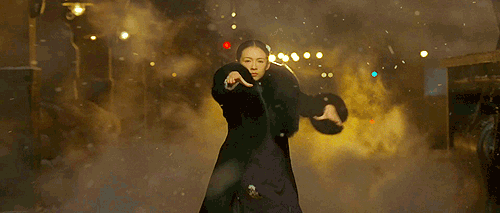
My father would always say, people who practice martial arts go through three stages: seeing yourself, seeing the world, seeing all living beings.
The Grandmaster (Yi dai zong shi), Wong Kar-Wai (2013)
#Kar Wai Wong#Jingzhi Zou#Haofeng Xu#Tony Chiu Wai Leung#Ziyi Zhang#Chen Chang#Song Hye Kyo#Benshan Zhao#Qingxiang Wang#Jin Zhang#Tielong Shang#Woo Ping Yuen#Hoi Pang Lo#Elvis Tsui#Kar Yung Lau#Philippe Le Sourd#Shigeru Umebayashi#Nathaniel Méchaly#Stefano Lentini#William Chang#Hung Poon#2013
16 notes
·
View notes
Photo

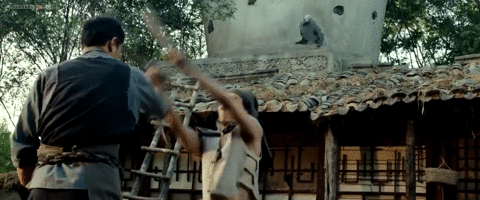

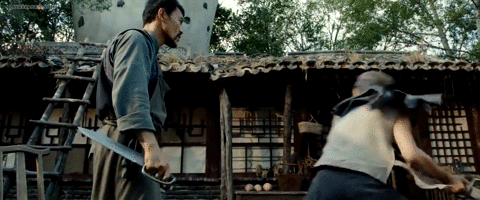
The Final Master (2017)
289 notes
·
View notes
Text
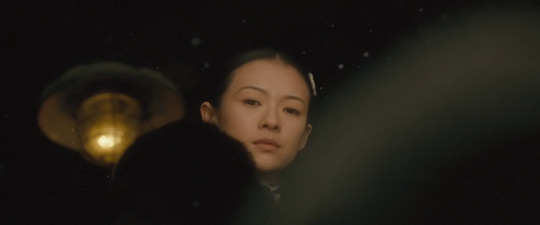
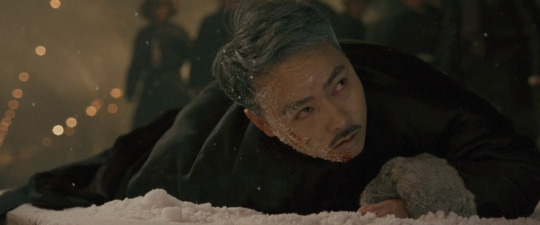




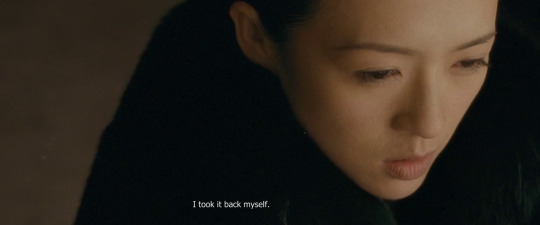
一代宗師, 2013
#一代宗師#一代宗师#the grandmaster#yi dai zong shi#action#biography#drama#kar-wai wong#jingzhi zou#haofeng xu#ziyi zhang#jin zhang#revenge
5 notes
·
View notes
Text
First stills for Chen Kun, Zhou Xun's upcoming wuxia film
First stills for Chen Kun, Zhou Xun’s upcoming wuxia film
Chen Kun and Zhou Xun are reuniting after 6 years in upcoming wuxia film The Weary Poet** 诗眼倦天涯 (lit.). The film comes from solid director-writer Xu Haofeng, whose credits include screenwriter for The Grandmaster 一代宗师 and The Great Protector 镖门 and director for The Final Master 师父.
(more…)
View On WordPress
2 notes
·
View notes
Video
youtube
MDK THIS DAY!
It’s m-effin movie time. First up, The Final Master.
#final master#netflix#movie night#martial arts movies#fight fight fight#what i'm watching#chinese movies#Xu Haofeng#wing chun#costume drama#period drama#liao fan
1 note
·
View note
Text

New Martial Arts Subgenre of Martial Arts Professionalism: Judge Archer
10 notes
·
View notes
Text
youtube
Nem hiszem el. Pátosz és melankólia, harc és csend, fél másodpercenként váltogatva. Az erotika szót nem írom le, ahhoz túl szemérmes vagyok. Mókás is lehetne a két szolga, addig a kavicsig kell elfutni, és aztán megfordulni, de hát tökmindegy, annyira jó az egész. “Miért a penge életlen oldalát használod?”
Wong Kar Wai egyik kungfus színésze beszélt arról, hogy a rendező nem ért a kungfuhoz, de művész, figyel. Ezt a filmet Xu Haofeng rendezte, és ő írta Wong Kar Wai Grandmasterének a forgatókönyvét.
Ő is figyelt.
És ő ért a kungfuhoz, ő a két öregember, aki egymásnak érinti a kézhátát a Tiantan melletti parkban, aztán nem mozdulnak, csak három órán keresztül beszélgetnek, hogy ezután mi lehetne.
Ő a lábas, aki érzi a benne fövő étel ízét.
Tök mindegy, mit rendezett előtte - van belőle jelenet youtube-on, a Legrosszabb harci jelenet címmel -, vagy utána, mikor már kitömték pénzzel.
Judge Archer, Final Master. Ha lesz tévém. Évek óta terv. Én vagyok az öreg a lándzsavívás előtt. Betöröm az ablakot, és szagolgatom a körtét. Nem sietek.
2 notes
·
View notes